All Good Down There
The “All Good Down There” campaign teaches people how to take care of their reproductive organs and how to prevent unpleasant problems such as sexually transmitted infections, infertility, incontinence or erectile dysfunctions. With that, it also provides information about what to do and where to go if you find yourself in such situations.
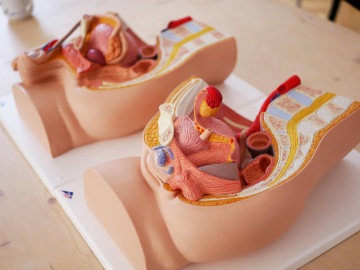
Sexually transmitted diseases (STDs)
Sexually transmitted diseases (STDs) are transmitted during sexual intercourse (vaginal, oral or anal). These diseases affect women more often than men. Men, however, are more often asymptomatic virus carriers of such diseases.
Most common STDs
- HPV (Human Papilloma Virus)
- Chlamydia
- Gonorrhea
- Syphilis
- HIV – virus causing AIDS (Acquired Immune Deficiency Syndrome), which is a disease. AIDS is a late stage of HIV infection; however, if someone is HIV positive, it doesn't have to mean he/she has AIDS yet.
- Hepatitis B and C
How are STDs transmitted?
- Sexual intercourse (vaginal, oral and anal)
- Blood (infected needle)
- Sperm and vaginal discharge
- Saliva
- Mother-to-child transmission (during pregnancy, giving birth or in breast milk)
How do STDs manifest themselves?
- No symptoms! Don't forget to get tested regularly.
- Itching
- Abnormal vaginal discharge or odor
- Skin changes
- Pain or bleeding during sex
- Blood in urine
- Infertility
How to prevent STDs?
- Use a condom!
- Get vaccinated against HPV infection
- Get regularly tested with your partner
- Maintain appropriate intimate hygiene (use intimate soap, wear breathable underwear)
Where to get tested, when...
- ...you had an unprotected sex ––> Get tested, but wait for at least 3 months (that's how long it takes HIV to be detectable in your body)
- ...you have a long term relationship and you want to have sex without a condom –> Ask your gynecologist or dermatovenerologist to test you for STDs.
- ...you experience any of the symptoms above ––> Don't be shy or ashamed, don't look for advice on the internet and go to your GP or your dermatovenerologist.
The map of STD test centers can be found HERE.
IMPORTANT: If you are diagnosed with any of the STDs, inform all your past and present sexual partners - they need to get tested and treated as well!
How much does it cost?
If you had unprotected sex or if you experience any of the symptoms, the test is free. If you want to get tested “just in case”, it costs about 500,- Kč.
Birth control
Birth control (or contraception) is used to prevent unwanted pregnancy. There are birth control methods available both for men and women. Discuss the most suitable method with your partner and your doctor.
How to choose the most suitable birth control?
Choose the best one with your partner and gynaecologist.
It’s important to take into consideration your:
- AGE – various forms are suitable for different ages
- HEALTH CONDITION – some conditions might exclude using some forms
- COST – some are better for singles, some for long-term relationships
- EFFECTIVENESS – it significantly varies with each form
- POTENTIAL SIDE EFFECTS – every form has some
- CONVENIENCE – it shouldn’t interfere with the user’s life
What to do when it fails?
Don’t panic, don’t search on the internet. Talk about it with your partner. You forgot to take the pill, or your ring fell out? Have a look at the package leaflet. There’s a guide on what to do in each menstrual cycle. If it says to see a doctor, don’t hesitate and make an appointment.
Did your condom break, or your pessary fell out? Wait till morning and call your gynaecologist. They’ll examine you with ultrasound to determine your menstrual cycle and potentially recommend the “morning-after” pill. Chemists will give you instructions on how to use it so you won’t spend eternity at the practice.
IMPORTANT: Did the condom break while having sex with someone who’s not your partner? Get tested for STDs after 3 months.
If you practised the “pull-out method” and “slipped”, take the same steps as if your condom broke. BEWARE! Coitus interruptus is not a birth control method!
Condom
Condoms are birth control for men. It’s meant to be put on the penis before the sex and taken off after it. You can buy it at the chemist’s, supermarket or online. If you’re allergic to latex, don’t despair – there are latex-free condoms as well.
- Price: male 20 CZK, female 40 CZK
- Non-hormonal
- Real failure rate: 18%
- No prescription
What not to do?
- Don’t keep the condom in your wallet or purse without the original packaging; never use it after the expiration date.
- Don’t open it with scissors or teeth or use it more than once.
- Always use water-based lube with the condom. Oil-based ones could cause it to break and lower its effectiveness. Some men also get the idea to reduce the penis’ sensitivity by putting on two condoms which more likely leads the condom to “slip” or break rather than increase its effectiveness.
IMPORTANT: Condom is the only means of birth control that prevents STDs. Therefore, use it whenever you’re not sure your partner is negative.
The list of birth control methods is informative. Your gynaecologist will recommend you the most suitable one.
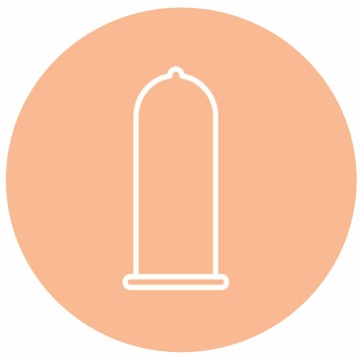

Coitus interruptus – the pull-out method
It’s simple… A man pulls out his penis right before the orgasm and ejaculates outside the vagina. Coitus interruptus is not a birth control method, even though many people think of it that way. It’s the oldest, most cheap and least effective method, and the risk is up to 40%!
Especially when the man isn’t experienced and pulls out late. The fact that a so-called “pre-cum” containing sperm can be discharged has an effect. In a case of a “second round”, the sperm might stay on the penis and reach the vagina later.
- Price: free
- Non-hormonal
- Failure rate: 40%
- No prescription

IMPORTANT: Condom is the only means of birth control that prevents STDs – practising this method doesn’t.
Sterilisation and vasectomy
It’s a surgical procedure to block some parts of the reproductive system – fallopian tubes for women under general anaesthesia and sperm ducts for men under local anaesthesia. The surgery is irreversible.
Just to be clear, it’s not a procedure done on every other person. One reason for a vasectomy is frequent epididymitis (inflammation).
The man can have sex and ejaculate after the surgery, but the ejaculate doesn’t contain sperm. Those are still produced in the testicles but progressively die so that the testicles won’t get bigger :-) Testosterone is being produced as well.
- Price: vasectomy is usually more than 10,000 CZK, and sterilisation is about 15,000–25,000 CZK.
- Non-hormonal
- Risk failure: 0.15% for vasectomy and 0.5% for sterilisation
IMPORTANT: Condom is the only means of birth control that prevents STDs – this method doesn’t.
The list of birth control methods is informative. Your gynaecologist will recommend you the most suitable one.
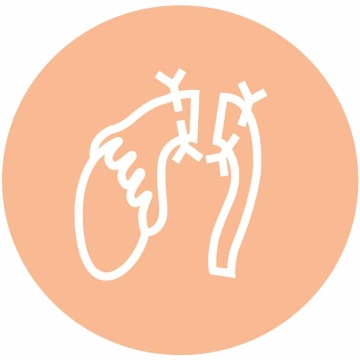

Intrauterine device
An intrauterine device (IUD) is another birth control method. There’s either hormonal or non-hormonal one. The gynaecologist puts it in the uterus, where it stays for another 3–5 years. It’s done without anaesthesia on the practice chair and might be unpleasant.
Hormonal ones contain progesterone which thickens the cervical mucus and bans sperm from getting through and fertilising the egg. For example, a hormonal IUD called Mirena lasts 5 years and is recommended for women who’ve already given birth. An IUD called Jaydess lasts 3 years and is for women who’ve never given birth.
Non-hormonal birth control is recommended specifically for women with conditions disallowing them to take hormones. The device contains a metal wire (copper, silver, etc.) which provokes a reaction similar to inflammation, and white blood cells arrive. Those then fight the sperm and won’t let it reach the egg. Such a device is called Gynefix and lasts for 5 years.
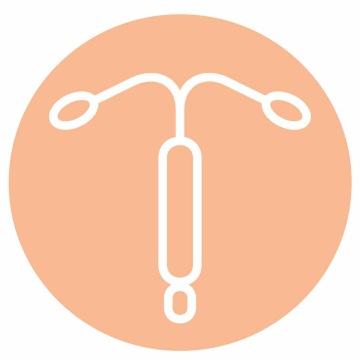
Women don’t have to take medication which is an advantage, but there are some risks, such as endometriosis or pelvic inflammatory disease and cramps and pain after inserting. The partner might not like the strings.
- Price: 3,000–5,000 CZK
- Non-hormonal and hormonal
- Risk failure: 0.8%
- Prescription
IMPORTANT: Condom is the only means of birth control that prevents STDs – this method doesn’t.
The list of birth control methods is informative. Your gynaecologist will recommend you the most suitable one.
Birth control pills
Women take these every day continuously or with a one-week break after 3 weeks. There are two forms of these: progestin-only and combined.
The progestin-only gives progesterones to the body and thickens the cervical mucus to stop the sperm from entering the egg and fertilising it. It’s suitable for breastfeeding women who can’t take oestrogen. On the other hand, women with breast cancer or 5 years after its treatment can’t take it.
The combined pill contains oestrogen and progesterone. It functions in three ways – blocks ovulation, thickens the mucus and thins the uterine lining to stop an egg from nesting there.
The risk of failure is low and depends on the user’s responsibility – a delay longer than 12 hours might significantly lower its effectiveness. Using the pill is also connected to a high risk of thrombosis. It can cause spotting, headache, depression, low sex drive, rash, acne or stomachache.
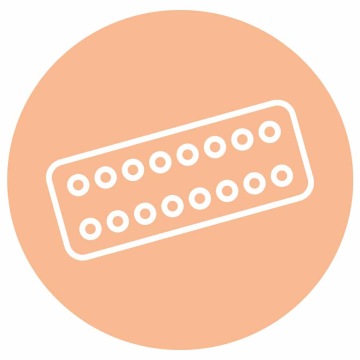
What to do when you forget to take the pill? Don’t panic and check the package leaflet. There’s a guide on what to do in each menstrual cycle. If it says to see a doctor, don’t hesitate and make an appointment.
- Price: 150–400 CZK/month
- Hormonal
- Risk failure is 3% if the user takes it responsibly
- Prescription
IMPORTANT: Condom is the only means of birth control that prevents STDs – this method doesn’t.
The list of birth control methods is informative. Your gynaecologist will recommend you the most suitable one.
Pessary
before sex, and it needs to stay there for 6 more hours after it. The pessary covers the cervix and mechanically prevents pregnancy. It’s necessary to wash the device after use with warm water and soap and put it in its place. There are pessaries on the market called Caya or FemCap, and you can purchase those online or at the chemists.
Using a spermicide gel along with the pessary is recommended because it makes the sperm unable to move and increases the pessary’s effectiveness. It takes effect minutes after applying and lasts for several hours. Spermicides come in various forms: creams, tampons, etc., and people should use them with other forms of birth control (pessary, condom). These spermicides alone are not a reliable method of birth control.
A cervical pessary can be inside for up to 48 hours, the vaginal one up to 24 hours for repeated sex, but it’s recommended to reapply the spermicides before each intercourse.

- Price: 1,300 CZK (lasts for 2 years), spermicides 250–450 CZK/package (15 pills)
- Non-hormonal
- Risk failure: 18%
- No prescription
IMPORTANT: Condom is the only means of birth control that prevents STDs – this method doesn’t.
The list of birth control methods is informative. Your gynaecologist will recommend you the most suitable one.
The “morning-after” pill
A “morning-after” pill, or postcoital contraception, is not birth control in the word’s true meaning. It’s an emergency method used if the condom or pessary breaks, and it’s either hormonal or non-hormonal.
Hormonal one blocks egg release or fertilisation of an already released egg. Two pills must be taken within 72 hours of unprotected sex (Postinor).
The non-hormonal pill (Ella One) postpones ovulation (blocks progesterone receptors) and prevents the sperm from getting to the egg. It’s necessary to take it as soon as possible after the sex, ideally within 24 hours.
Both these forms are foreign to the body and disrupt the natural cycle. That’s why the morning-after pill should not be a standardised form of birth control.
- Price: around 600 CZK
- Hormonal and non-hormonal
- Not a standard method
- No prescription

The list of birth control methods is informative. Your gynaecologist will recommend you the most suitable one.
Contraceptive patch
A contraceptive patch works on the same principle as a combined pill. The difference is in how hormones get to the system – through the skin – so it’s gentler on the stomach. The user puts the patch anywhere (except for breasts) on their body once a week. Hormones preventing pregnancy spread throughout the body in the next 24 hours. The patch needs to be replaced every week on the same day.
There’s a one-week break when menstruation comes. Unlike other hormonal forms, this patch doesn't make users put on weight due to low hormone dosage.
- Price: 300–400 CZK a month
- Hormonal
- Risk failure is 3% if the user takes it responsibly
- No prescription

The list of birth control methods is informative. Your gynaecologist will recommend you the most suitable one.
Vaginal ring
A vaginal ring is inserted into the vagina (around the cervix), where it stays for 3 weeks and locally releases hormones. The user menstruates for one week after taking it out. Applying and taking out is easy, so going to a gynaecologist every month is unnecessary. It’s perfect for women who forget to take the pills or have digestive problems while using them.
- Price: 300–400 CZK a month
- Hormonal
- Risk failure is 3% if the user takes it responsibly
- Prescription
IMPORTANT: Condom is the only means of birth control that prevents STDs – this method doesn’t.
The list of birth control methods is informative. Your gynaecologist will recommend you the most suitable one.

Contraceptive injection
It is applied once every 3 months to the gluteal muscle. There’s Depo Provera available on the market right now, and it’s suitable for women who can’t use oestrogen (vascular disease, endometriosis, breastfeeding). A disadvantage could be potentially being unable to get pregnant for the next 2 years after using this method. Also, these injections shouldn’t be applied to young adolescent girls who don’t have mature bone tissue (which might lead to low bone density).
- Price: 120–150 CZK for 3 months (+50–150 CZK for applying)
- Hormonal
- Risk failure: 0.05%
- Prescription
IMPORTANT: Condom is the only means of birth control that prevents STDs – this method doesn’t.
The list of birth control methods is informative. Your gynaecologist will recommend you the most suitable one.
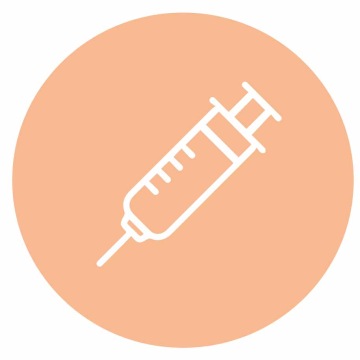
Contraceptive implant
A contraceptive implant is a small plastic rod, and the gynaecologist inserts it once every 3 years into the inner part of the arm. It’s highly reliable, and the risk of failure is only 0.05%. It doesn’t contain oestrogen, so women at high risk of thrombosis can use it. It’s unsuitable for young girls because it might increase the risk of irregular menstruation and for menopausal women as it might cause bone osteoporosis.
- Price: 5,000 CZK
- Hormonal
- Risk failure: 0.05%
- No prescription
IMPORTANT: Condom is the only means of birth control that prevents STDs – this method doesn’t.
The list of birth control methods is informative. Your gynaecologist will recommend you the most suitable one.

(In)fertility
Infertility is a state, during which a woman cannot get pregnant for a year, while having sexual intercourse twice a week. In 40 % of the cases, the problem is on the male side, in 40 % on the female side and in 20 % of the cases, there is a problem with both of them.
Causes of infertility
How to prevent infertility?
- Conceive at a young age
- Don't smoke
- Don't drink alcohol
- Have a healthy diet (avoid underweight or overweight)
- Don't overheat testicles (don't wear tight pants, don't put your laptop on your lap)
- Get regular check-ups
Incontinence
Incontinence is any accidental or involuntary loss of urine from the urinary bladder. It affects up to 50 % of women, however only 10 % of them are seeking help. Men experience similar problems as well. Don't be shy and ask your urologist or gynecologist for help in time!
What can cause incontinence?
- Childbirth - can damage pelvic floor muscles
- Surgery - can damage nerves or pelvic floor muscles
- Age - the flexibility of pelvic floor muscles naturally decreases with age
- Obesity - puts pressure on pelvic floor muscles
How to prevent incontinence
- Go to your GP, urologist or gynecologist in time
- Strengthen your pelvic floor muscles with exercise
- Have a healthy lifestyle
Erectile dysfunction
Erectile dysfunction is an inability to get or keep an erection for time needed to fully enjoy sex. More than 50 % of men over the age of 50 experience problems with erection, however it can affect young men as well. Don't hesitate, don't be shy and go to your urologist in time!
What are the stages of erectile dysfunction?
- Cucumber - optimal erection
- Banana - almost optimal erection
- Peeled banana - mild dysfunction
- Tofu - severe dysfunction
What causes erectile dysfunctions?
- Mental state
- Smoking and alcohol
- Diabetes
- Age over 50
- Obesity
- Surgeries and injuries
How to prevent erectile dysfunction?
- Go to your regular check-ups
- Have a healthy lifestyle
- Go to your GP or urologist if you experience any problems


